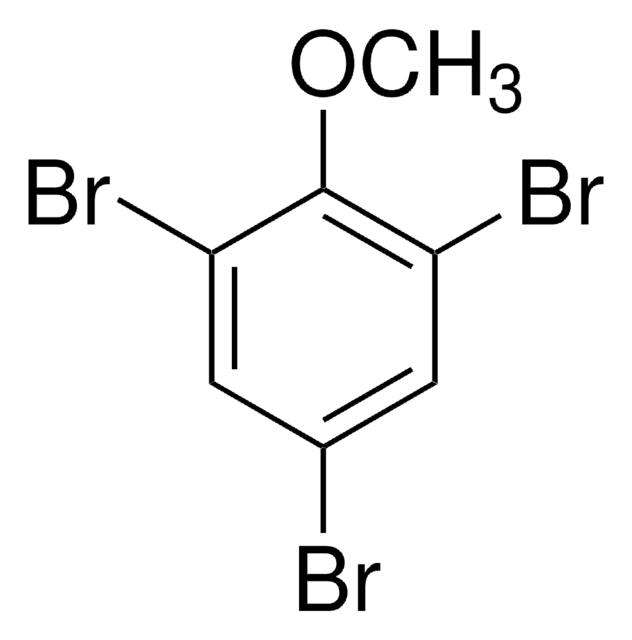137715
2,4,6-Tribromophenol
99%
Synonym(s):
1,3,5-Tribromo-2-hydroxybenzene, Bromol
About This Item
Recommended Products
vapor density
11.4 (vs air)
Assay
99%
bp
282-290 °C/746 mmHg (lit.)
mp
90-94 °C (lit.)
solubility
water: soluble 0.007g/100ml at 25 °C
chloroform: soluble
diethyl ether: soluble
ethanol: soluble
methanol: soluble
methylene chloride: soluble
SMILES string
Oc1c(Br)cc(Br)cc1Br
InChI
1S/C6H3Br3O/c7-3-1-4(8)6(10)5(9)2-3/h1-2,10H
InChI key
BSWWXRFVMJHFBN-UHFFFAOYSA-N
Looking for similar products? Visit Product Comparison Guide
Related Categories
General description
Application
Signal Word
Warning
Hazard Statements
Precautionary Statements
Hazard Classifications
Aquatic Acute 1 - Eye Irrit. 2 - Skin Sens. 1
Storage Class Code
11 - Combustible Solids
WGK
WGK 3
Flash Point(F)
Not applicable
Flash Point(C)
Not applicable
Certificates of Analysis (COA)
Search for Certificates of Analysis (COA) by entering the products Lot/Batch Number. Lot and Batch Numbers can be found on a product’s label following the words ‘Lot’ or ‘Batch’.
Already Own This Product?
Find documentation for the products that you have recently purchased in the Document Library.
Customers Also Viewed
Our team of scientists has experience in all areas of research including Life Science, Material Science, Chemical Synthesis, Chromatography, Analytical and many others.
Contact Technical Service














